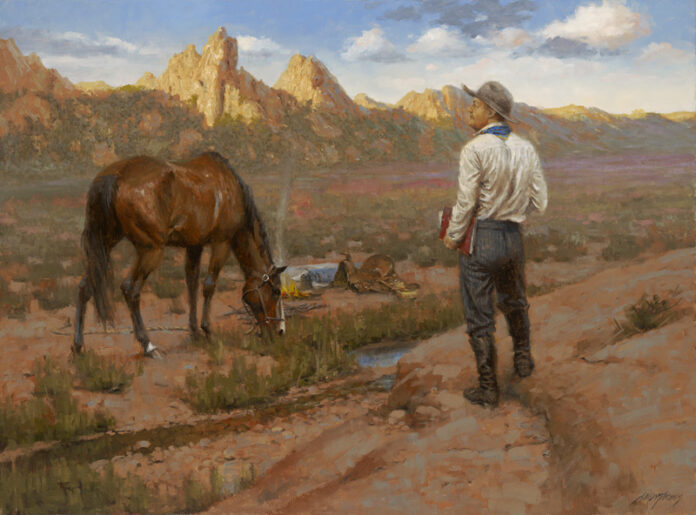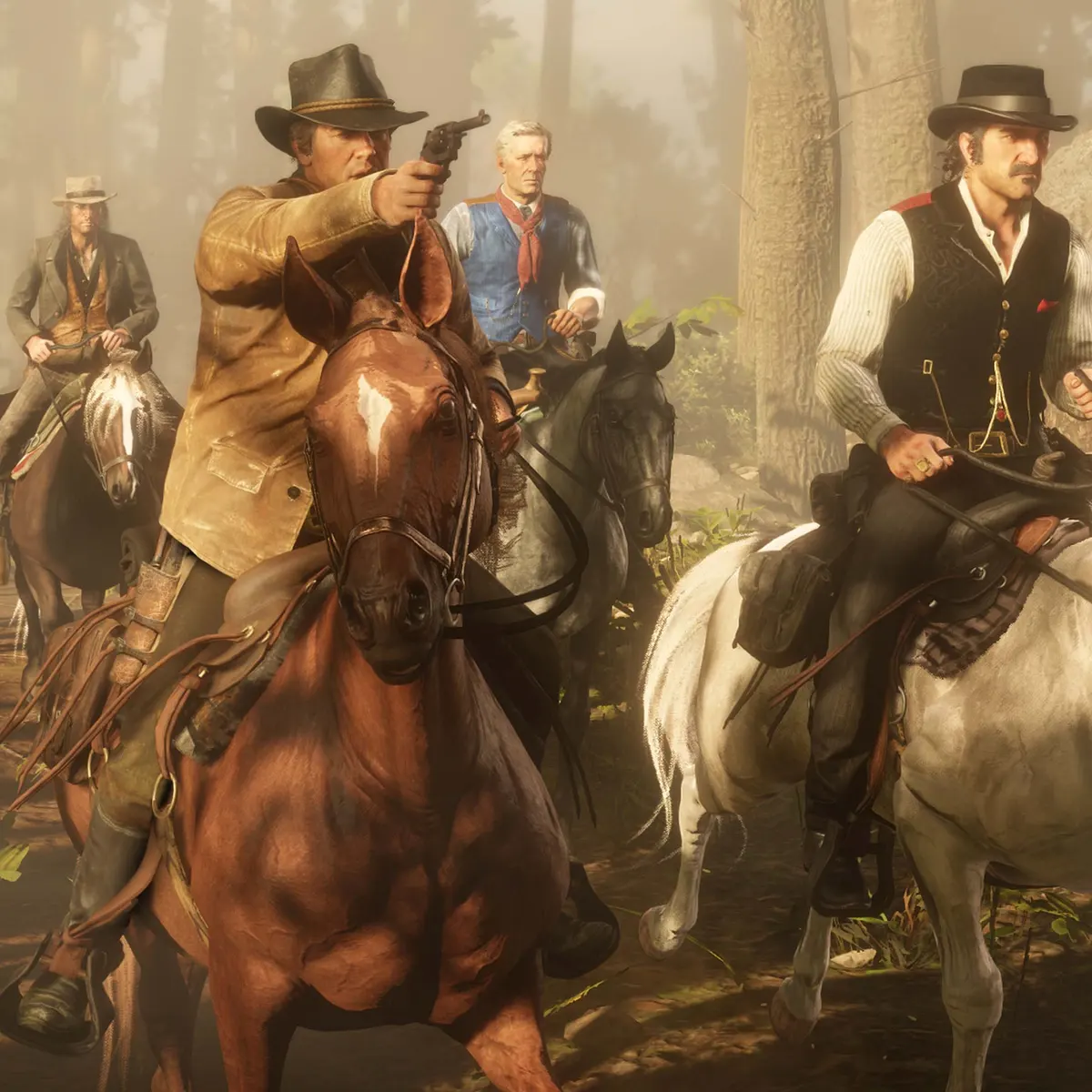
Frederic Remington, one of the most celebrated American artists of the late 19th and early 20th centuries, possessed a remarkable ability to transport viewers into the untamed world of the American West through his immersive depictions of Western landscapes. With his masterful brushstrokes and keen eye for detail, Remington captured the essence and vastness of the frontier, bringing it to life on canvas in a way that continues to captivate audiences to this day.
Remington’s paintings of Western landscapes not only showcase his technical prowess but also serve as visual narratives, providing viewers with a glimpse into the majesty and allure of the American West. Through his artistic interpretations, he revealed the rugged beauty of towering mountains, expansive prairies, and rugged canyons that defined the Western frontier. Whether it was a serene sunset casting a warm glow over the desert or the dramatic interplay of light and shadow in a mountain range, Remington’s landscapes exuded a sense of awe and wonder, drawing viewers into the untamed wilderness.
One of Remington’s notable contributions was his ability to infuse his landscapes with a sense of movement and dynamism. His paintings often featured elements like galloping horses, herds of bison, or Native American tribes in action, imbuing the scenes with a palpable energy. This dynamic quality served to further immerse viewers in the wild and rugged nature of the Western frontier, conveying a sense of adventure, danger, and untamed freedom.
Famous artist Remington‘s attention to detail was unparalleled. Each brushstroke meticulously rendered the texture of rocks, the sway of grass, or the delicate play of light on water. His keen observations and dedication to accuracy allowed him to create vivid and realistic landscapes, transporting viewers to a time and place where nature reigned supreme. Whether it was the dusty trails of a cowboy riding through a canyon or the dense foliage of a forest, Remington’s landscapes became windows into the natural world, inviting viewers to step into the scene and experience the rugged beauty firsthand.
Furthermore, Remington’s landscapes often served as backdrops to his narrative paintings, where he portrayed cowboys, Native Americans, and other figures engaged in various activities. By skillfully integrating the human presence into the landscape, Remington showcased the interplay between man and nature in the Western frontier. The vastness and grandeur of the landscapes emphasized the challenges and triumphs of those who ventured into the untamed territory, providing a powerful context for his narrative works.
Horses, Cowboys, and Native Americans: A Glimpse into Remington’s Iconic Characters

Frederic Remington, renowned for his portrayal of the American West, captured the essence of its vibrant culture through his depiction of iconic characters such as horses, cowboys, and Native Americans. His paintings serve as windows into a bygone era, offering viewers a fascinating glimpse into the lives, struggles, and triumphs of these figures that shaped the Western frontier.
Remington’s ability to convey the spirit and energy of horses was truly remarkable. His paintings exude a sense of the power, grace, and untamed nature of these majestic animals. Whether galloping across vast plains, hauling wagons, or serving as trusted companions to cowboys and Native Americans, Remington’s horses become living, breathing beings on his canvases. Through his skillful rendering of their muscular forms, flowing manes, and expressive eyes, he captured the symbiotic relationship between humans and horses that was vital in the West. Remington’s depictions of horses not only showcased their physical beauty but also hinted at their significance in shaping the landscape and culture of the American West.
Cowboys, often portrayed as rugged and solitary figures, held a central place in Remington’s artistic repertoire. With his keen eye for detail, he meticulously depicted their attire, from weathered hats and worn-out boots to fringed jackets and chaps. Through his paintings, Remington brought to life the everyday experiences of these individuals—whether herding cattle, participating in rodeos, or engaging in intense moments of action and camaraderie. His portrayal of cowboys evokes a sense of freedom, resilience, and self-reliance that became synonymous with the Western frontier. Remington’s ability to capture the essence of these figures not only preserves their legacy but also serves as a testament to the spirit of the American West.
In addition to cowboys, Remington’s paintings also shed light on the Native American cultures that inhabited the Western territories. His portrayals reflect a deep respect and fascination for their traditions, clothing, and way of life. Remington’s sensitive approach allowed him to capture the strength, dignity, and connection to nature that characterized Native American communities. Whether depicting ceremonial rituals, hunting scenes, or moments of quiet contemplation, he portrayed Native Americans as multifaceted individuals with rich cultural heritage. Through his paintings, Remington offered a glimpse into the complex and nuanced world of these indigenous peoples, challenging common stereotypes and fostering a greater understanding and appreciation for their contributions to the American West.
Brushstrokes of Authenticity: Exploring Remington’s Technique and Artistic Vision

Frederic Remington, a master of his craft, not only captured the essence of the American West in his paintings but also demonstrated a remarkable technique and artistic vision that set him apart. By delving into Remington’s brushstrokes of authenticity, we can gain a deeper understanding of his artistic process and the unique qualities that made his work so iconic.
Remington’s technique was characterized by a blend of precision and spontaneity. His brushwork exhibited a lively energy, reflecting the dynamism of the Western frontier he sought to portray. Whether it was the swift strokes that depicted galloping horses or the bold dabs of color that captured the play of light on a landscape, Remington’s brushwork conveyed a sense of immediacy and movement. This allowed his paintings to possess an almost tactile quality, engaging viewers on an emotional and sensory level. His ability to convey texture, whether it be the roughness of a cowboy’s worn-out jacket or the softness of a horse’s mane, added depth and authenticity to his subjects.
Furthermore, Remington’s attention to detail was remarkable. He was a keen observer of his surroundings, meticulously studying the landscapes, horses, and characters that defined the American West. This commitment to accuracy allowed him to capture the essence of his subjects with a remarkable level of authenticity. Remington’s dedication to portraying the intricacies of cowboy attire, Native American regalia, and the rugged terrain showcased his commitment to historical and cultural accuracy. This attention to detail elevated his work beyond mere artistic representation and turned it into a visual documentation of a specific time and place.
In addition to his technical prowess, Remington possessed a distinct artistic vision that shaped his body of work. His paintings captured not only the physicality of the American West but also the spirit and character of the people and landscapes. He sought to convey the ruggedness, resilience, and untamed nature of the frontier, evoking a sense of adventure and exploration. Remington’s work was imbued with a romanticized quality, showcasing a world where nature, humans, and animals coexisted in a precarious harmony. His paintings often told stories, inviting viewers to step into the scenes and become part of the narrative.
Remington’s artistic vision extended beyond his paintings, as he also embraced other mediums such as sculpture and illustration. His sculptures, much like his paintings, captured the vitality and energy of the American West, showcasing his ability to work in three dimensions. His illustrations for books and magazines provided vivid visual narratives that further solidified his reputation as a visual storyteller.

Conclusion
Delving into the masterpieces of Frederic Remington’s paintings offers us a profound appreciation for the artistry and storytelling prowess of this iconic American Western artist. Remington’s works transport us to the untamed landscapes and evoke the spirit of a bygone era. Through his immersive depictions of Western landscapes, we witness the breathtaking beauty and vastness of the frontier, while his portrayal of iconic characters such as horses, cowboys, and Native Americans grants us a glimpse into their lives, struggles, and triumphs.
Remington’s paintings are not merely artistic renderings; they are vivid narratives that speak to the human experience in the American West. With meticulous brushstrokes, he conveys movement, texture, and authenticity, breathing life into his subjects and enabling us to connect with their stories on a profound level. Remington’s attention to detail and historical accuracy further enrich his paintings, enabling us to witness the cultural heritage and the pivotal role of these figures in shaping the Western frontier.
Through his technique and artistic vision, Remington immortalizes the untamed spirit of the American West, captivating us with its grandeur, resilience, and inherent romance. His work continues to inspire awe and curiosity, inviting us to explore the frontier through his eyes and appreciate the rich tapestry of the Western landscape and its inhabitants.
As we unveil Remington’s masterpieces, we come to recognize the artistic genius that has left an indelible mark on American art. His paintings transcend time and offer us a profound connection to a world long gone. Frederic Remington’s legacy endures, reminding us of the power of art to encapsulate history, evoke emotion, and preserve the spirit of a captivating era in the annals of American culture.








